#Spectroscopy
Explore tagged Tumblr posts
Text
Black Scientists and Engineers Past and Present Enable NASA Space Telescope
The Nancy Grace Roman Space Telescope is NASA’s next flagship astrophysics mission, set to launch by May 2027. We’re currently integrating parts of the spacecraft in the NASA Goddard Space Flight Center clean room.
Once Roman launches, it will allow astronomers to observe the universe like never before. In celebration of Black History Month, let’s get to know some Black scientists and engineers, past and present, whose contributions will allow Roman to make history.
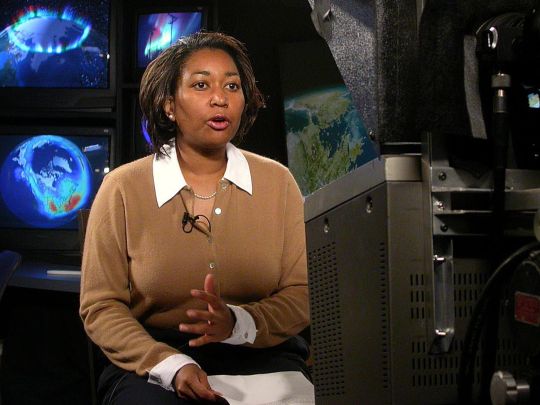
Dr. Beth Brown
The late Dr. Beth Brown worked at NASA Goddard as an astrophysicist. in 1998, Dr. Brown became the first Black American woman to earn a Ph.D. in astronomy at the University of Michigan. While at Goddard, Dr. Brown used data from two NASA X-ray missions – ROSAT (the ROentgen SATellite) and the Chandra X-ray Observatory – to study elliptical galaxies that she believed contained supermassive black holes.
With Roman’s wide field of view and fast survey speeds, astronomers will be able to expand the search for black holes that wander the galaxy without anything nearby to clue us into their presence.
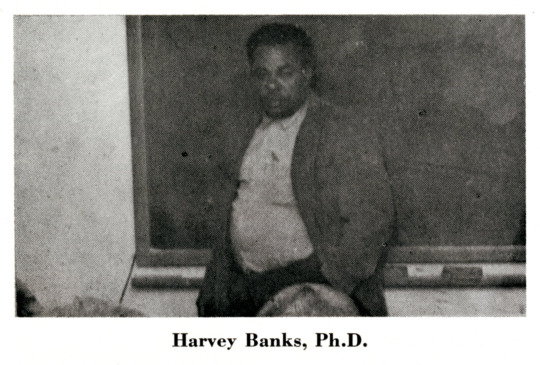
Dr. Harvey Washington Banks
In 1961, Dr. Harvey Washington Banks was the first Black American to graduate with a doctorate in astronomy. His research was on spectroscopy, the study of how light and matter interact, and his research helped advance our knowledge of the field. Roman will use spectroscopy to explore how dark energy is speeding up the universe's expansion.
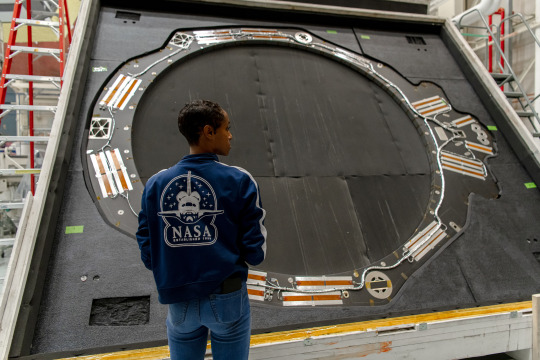
NOTE - Sensitive technical details have been digitally obscured in this photograph.
Sheri Thorn
Aerospace engineer Sheri Thorn is ensuring Roman’s primary mirror will be protected from the Sun so we can capture the best images of deep space. Thorn works on the Deployable Aperture Cover, a large, soft shade known as a space blanket. It will be mounted to the top of the telescope in the stowed position and then deployed after launch. Thorn helped in the design phase and is now working on building the flight hardware before it goes to environmental testing and is integrated to the spacecraft.
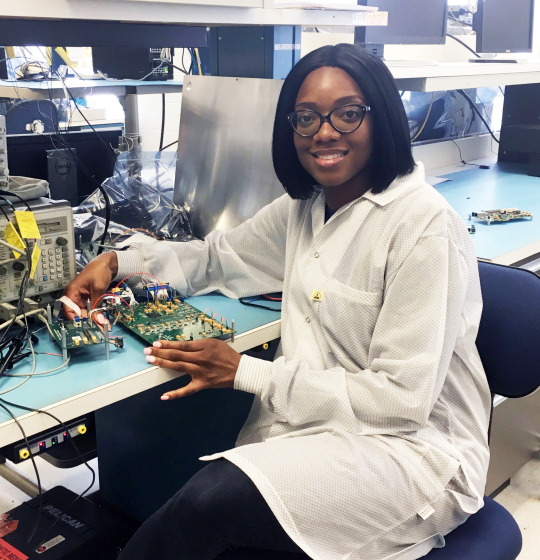
Sanetra Bailey
Roman will be orbiting a million miles away at the second Lagrange point, or L2. Staying updated on the telescope's status and health will be an integral part of keeping the mission running. Electronics engineer Sanetra Bailey is the person who is making sure that will happen. Bailey works on circuits that will act like the brains of the spacecraft, telling it how and where to move and relaying information about its status back down to Earth.
Learn more about Sanetra Bailey and her journey to NASA.
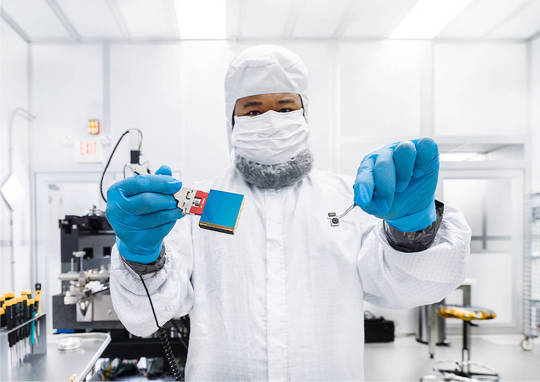
Dr. Gregory Mosby
Roman’s field of view will be at least 100 times larger than the Hubble Space Telescope's, even though the primary mirrors are the same size. What gives Roman the larger field of view are its 18 detectors. Dr. Gregory Mosby is one of the detector scientists on the Roman mission who helped select the flight detectors that will be our “eyes” to the universe.
Dr. Beth Brown, Dr. Harvey Washington Banks, Sheri Thorn, Sanetra Bailey, and Dr. Greg Mosby are just some of the many Black scientists and engineers in astrophysics who have and continue to pave the way for others in the field. The Roman Space Telescope team promises to continue to highlight those who came before us and those who are here now to truly appreciate the amazing science to come.
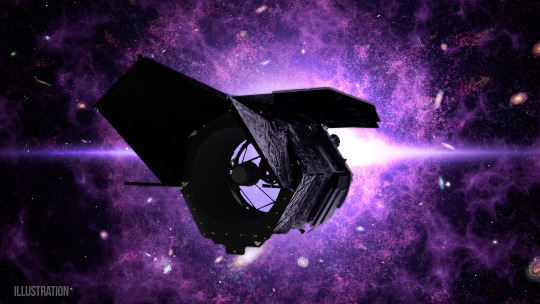
To stay up to date on the mission, check out our website and follow Roman on X and Facebook.
Make sure to follow us on Tumblr for your regular dose of space!
#NASA#astronomy#telescope#Roman Space Telescope#galaxies#black holes#space tech#astrophysics#spectroscopy#STEM#engineering#Black History Month#BlackExcellence365#science#tech#technology
2K notes
·
View notes
Text

The James Webb Space Telescope is capable of producing detailed imagery of galaxies and stars throughout the universe. Astronomers, however, also rely on Webb’s ability to perform spectroscopy. Spectra spread light out into a range of colors to allow researchers to analyze the intensity (or brightness) of individual colors, or wavelengths. Each of Webb’s four instruments are capable of spectroscopy. There are six spectroscopy modes. Certain methods like single-object slitless or slit spectroscopy allow us to capture the spectra of individual bright objects or small, but bright regions. Other methods take the spectra of many objects or an entire field, like in wide-field slitless or multi-object spectroscopy. See each of Webb’s spectroscopy modes and which instruments are involved for each: https://webbtelescope.pub/3uJUKoW
#space#astronomy#stsci#science#nasa#universe#nasawebb#james webb space telescope#jwst#webb telescope#webb#webb instruments#spectroscopy
72 notes
·
View notes
Text

Photoacoustic spectroscopy approach achieves real-time detection of low gas concentrations
Researchers have developed a new method for quickly detecting and identifying very low concentrations of gases. The new approach, called coherently controlled quartz-enhanced photoacoustic spectroscopy, could form the basis for highly sensitive real-time sensors for applications such as environmental monitoring, breath analysis and chemical process control. "Most gases are present in small amounts, so detecting gases at low concentrations is important in a wide variety of industries and applications," said research team leader Simon Angstenberger from the University of Stuttgart in Germany. "Unlike other trace gas detection methods that rely on photoacoustics, ours is not limited to specific gases and does not require prior knowledge of the gas that might be present." In Optica, the researchers report the acquisition of a complete methane spectrum spanning 3,050 to 3,450 nanometers in just three seconds, a feat that would typically take around 30 minutes.
Read more.
27 notes
·
View notes
Text
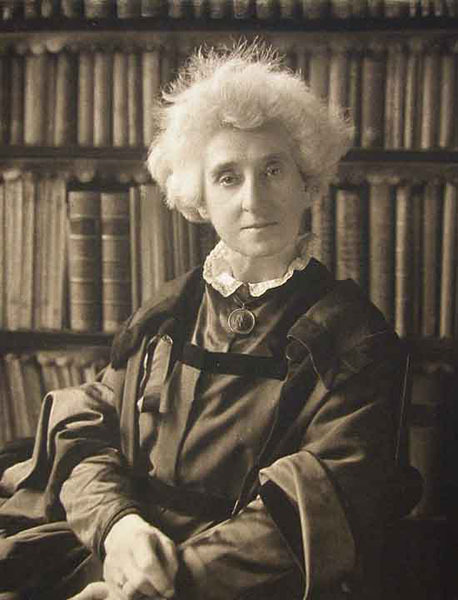
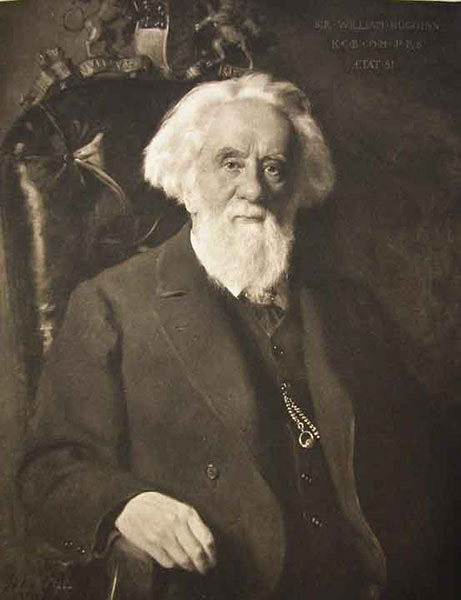
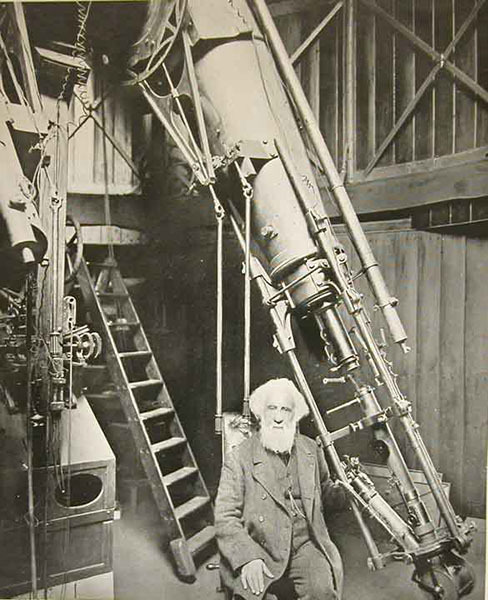
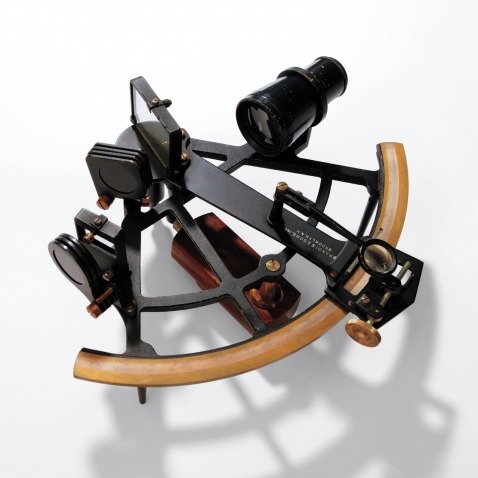
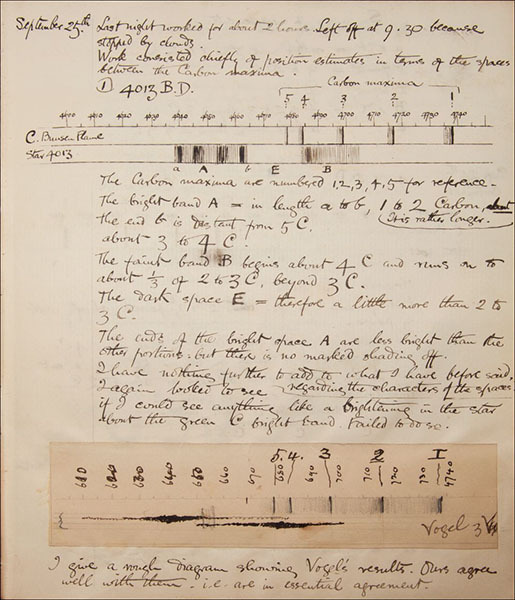
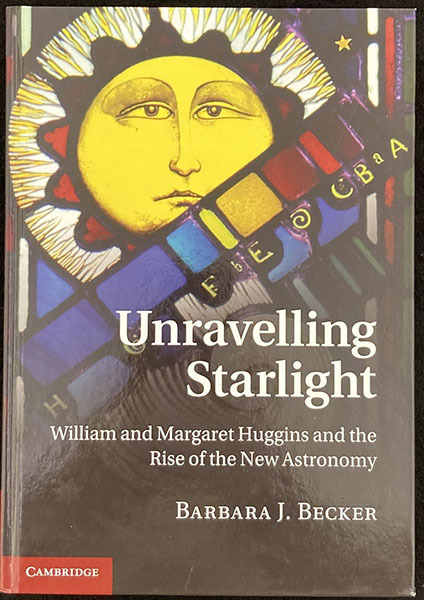
Margaret Lindsay Huggins – Scientist of the Day
Margaret Lindsay Huggins, an Irish astronomer, photographer, and spectroscopist, was born in Dublin on Aug. 14, 1848.
read more...
#Margaret Lindsay Huggins#spectroscopy#astronomy#astrophotograhy#histsci#histSTM#19th century#20th century#history of science#Ashworth#Scientist of the Day
28 notes
·
View notes
Text
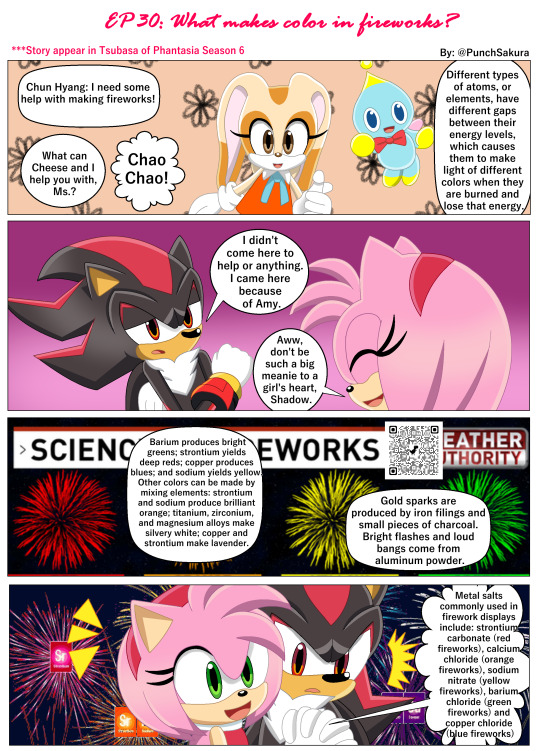

Knowledge 30

How do fireworks use visible light? More often, light from fireworks is produced by luminescence. When fireworks explode in the sky, the gunpowder reactions create a lot of heat, causing the metallic substances present in the stars to absorb energy from the heat and emit light.

There are three basic types of spectroscopy: atomic absorption spectroscopy (AAS), atomic emission spectroscopy (AES), and atomic fluorescence spectroscopy (AFS). AAS includes methods such as infrared (IR) spectroscopy and ultraviolet-visible (UV-Vis) spectroscopy.
What is the spectroscopy of a firework?
Spectroscopy—Colorants in fireworks displays produce colors by luminescence—the result of excited electrons emitting specific frequencies of electromagnetic energy as they fall back to ground state.

The heat travels along the fuse until it reaches the bottom of the main part of the firework, sometimes called the shell. This ignites the lift charge, which is made from black powder—a type of gunpowder—located at the bottom of the shell. When ignited, the black powder reacts to create hot gases and lots of energy.
#sakuraswordly#tsubasa of phantasia comic#tsubasa of phantasia knowledge#cream the rabbit#shadow the hedgehog#amy rose#clamp: Legend of Chun Hyang#fireworks#Spectroscopy
6 notes
·
View notes
Text
When it comes to layered quantum materials, current understanding only scratches the surface; so demonstrates a new study from the Paul Scherrer Institute PSI. Using advanced X-ray spectroscopy at the Swiss Light Source SLS, researchers uncovered magnetic phenomena driven by unexpected interactions between the layers of a kagome ferromagnet made from iron and tin. This discovery challenges assumptions about layered alloys of common metals, providing a starting point for developing new magnetoelectric devices and rare-earth-free motors.
4 notes
·
View notes
Text

Your summer reading list: Atomic Spectra and Atomic Structure - 1944.
#vintage illustration#books#vintage books#books and reading#reading#book covers#physics#spectroscopy#atomic structure#atomic spectra
7 notes
·
View notes
Text
Figure 20.6 shows an infrared spectrum of aspirin.
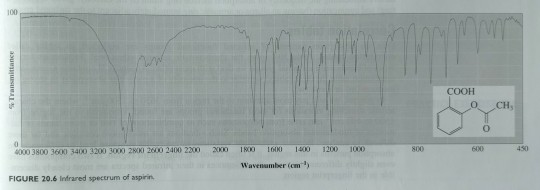
"Chemistry" 2e - Blackman, A., Bottle, S., Schmid, S., Mocerino, M., Wille, U.
9 notes
·
View notes
Text
When you tune the nmr after switching nuclei and it's quiet and you can hear your beloved magnetic pet squeakily contorting itself just to get your data and feel a little bad but also excited to see what you made.
#chemistry#chemblr#stemblr#women in stem#spectroscopy#grad school#I'm so sorry-you're so old-please don't break#inorganic chemistry#inorganic
5 notes
·
View notes
Text

6 notes
·
View notes
Text
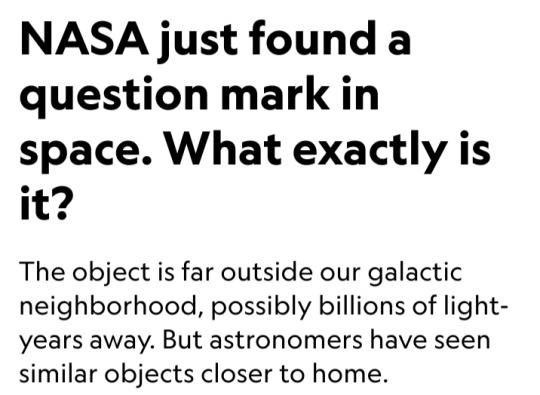
By Allie Yang
10 August 2023
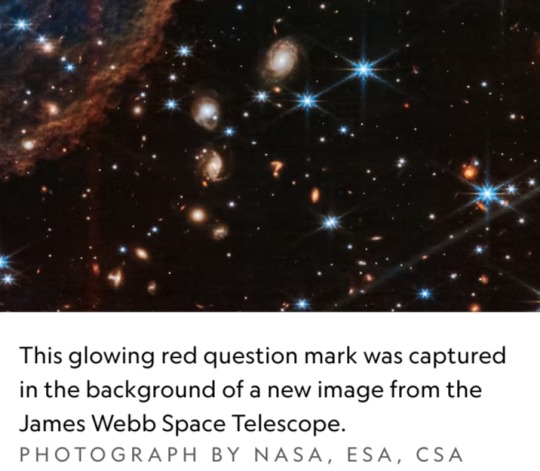
Two of our galaxy’s most famous stars were recently photobombed by what appears to be a celestial question mark.
The symbol was spotted in a new image from the James Webb Space Telescope (JWST) of the forming stars Herbig-Haro 46/47, which are well-known and have been frequently observed by astronomers.
These two stars can provide clues about how our own sun may have formed.
They’re relatively close to Earth, about 1,400 light-years, and relatively young, only a few thousand years old.
In fact, they’re still in gestation and have not technically been “born” yet, which is marked when the stars start shining from their own nuclear fusion.
The image is the first of the twin protostars from the NIRCam instrument on JWST.
It was captured using infrared light, which penetrates space dust more easily than visual light, and it is the highest resolution image of the objects ever seen at these wavelengths.
The telescope’s astonishing sensitivity allowed the glowing red question mark to be captured in the lower center of the image.
The object is far outside our galactic neighborhood, possibly billions of light-years away, says Christopher Britt, an education and outreach scientist at the Space Telescope Science Institute who helped plan these observations.
His best guess is that the question mark is actually two galaxies merging.
“That's something that's seen fairly frequently, and it happens to galaxies many times over the course of their lives,” he says.
“That includes our own galaxy, the Milky Way … [it] will merge with Andromeda in about four billion years or so.”
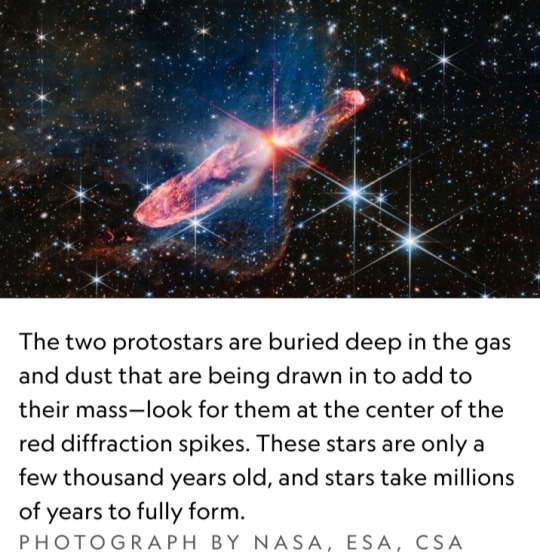
The hints pointing to two galaxies are found in the question mark’s strange shape.
There are two brighter spots, one in the curve and the other in the dot, which could be the galactic nuclei, or the centers of the galaxies, Britt says.
The curve of the question mark might be the “tails” being stripped off as the two galaxies spiral toward each other.
“It's very cute. It's a question mark … But you can find the colons and semicolons, and any other punctuation mark, because you have 10,000 little smudges of light in each image taken every half hour,” says David Helfand, an astronomer at Columbia University.
The sheer number of shining objects we find are bound to create some serendipitous images, and our brains have evolved to find those patterns, he says.
Astronomers have seen similar objects closer to home.
Two merging galaxies captured by the Hubble Space Telescope in 2008 also look like a question mark, just turned 90 degrees.
Helfand says the question mark seems to be two objects, the curve and the dot, but could be more that just happened to line up.
They could also be completely unrelated objects, he says, if one is much closer to Earth than the other.
Britt warns that estimating distance based only on colors in the image can be tricky.
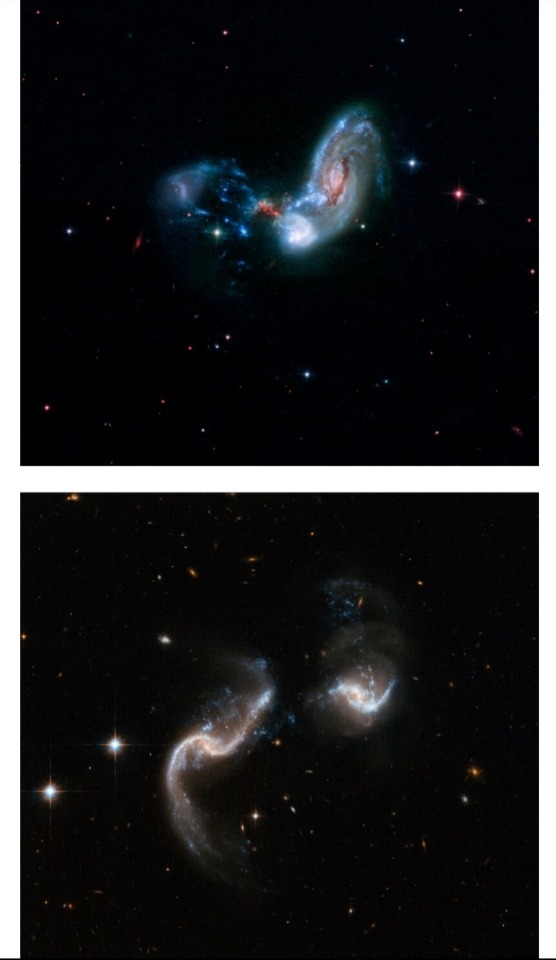
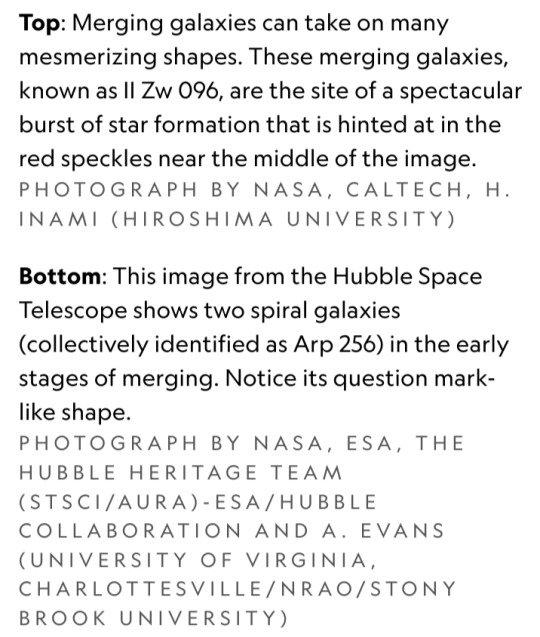
The red of the question mark could mean it’s very far away (light waves stretch as they travel through the expanding universe, shifting to redder wavelengths) or that it’s closer and obscured by dust near the object.
It would take more investigation to identify exactly how far away the question mark is.
This could be done by measuring photometric redshifts, determined by the brightness observed through different filters, but this would only provide an estimate for the distance, Britt says.
Spectroscopy, which analyzes light from the source to determine its elemental makeup, could provide a more exact distance but requires a separate instrument to measure.
Given the number of intriguing targets spotted by JWST, the question mark may never receive this treatment.
For now, the source of this symbol in the sky remains a cosmic mystery.
#James Webb Space Telescope (JWST)#celestial question mark#stars#galaxy#space#astronomy#Herbig-Haro 46/47#NIRCam#infrared light#protostars#Christopher Britt#Space Telescope Science Institute#galactic nuclei#astronomers#Hubble Space Telescope#photometric redshifts#Spectroscopy#cosmic mystery#National Geographic#Nat Geo#NASA
10 notes
·
View notes
Text
Ryan Whalen - NASA’s SPHEREx Space Telescope Begins its Groundbreaking Mission to Share All-sky Mapping Data with the Public:
SPHEREx #NASA #InfraredAstronomy #Infrared #Spectroscopy #Photometer #Biomarkers #BigData #Mapping #SpaceSurvey #Cosmology #Astronomy
#spherex#nasa#infraredastronomy#infrared#spectroscopy#photometer#biomarkers#bigdata#mapping#spacesurvey#cosmology#astronomy
0 notes
Text
SciTech Chronicles. . . . . . . . .July 7th, 2025
#rock-like#methane#CO2#fixation#markup#MD4C#26.2#2026#pancreatic#alginate#insulin#vascularization#optoacoustic#terahertz#spectroscopy#real-time#“emission limits”#“monitoring deserts”#toxins#AIRNow
0 notes
Text
Physicists from the National University of Singapore (NUS) have achieved controlled conformational arrangements in nanostructures using a flexible precursor and selenium doping, enhancing material properties and structural homogeneity. Their method advances on-surface synthesis for the design and development of engineered nanomaterials.
7 notes
·
View notes
Text
Amateur Telescope Spectroscopy Will Blow Your Mind!
Amateur Telescope Spectroscopy Will Blow Your Mind!I. Why Spectroscopy? Because Seeing Isn’t Always Believing!II. So, What Exactly IS Deep Sky Object Spectroscopy? (The Not-So-Boring Science Bit)III. Gearing Up: What You’ll Need to Become a Cosmic ChemistIV. Your Trusty Telescope: The Bigger, The Better (Usually!)V. The Star of the Show: Choosing Your Amateur SpectroscopeVI. Capturing the Light:…
0 notes
Text
Hydrogen atoms on methyl groups bonded to sp³ hybridised carbons, for example, typically give a signal near δ 0.8 - 1.0 (see figure 20.33 for an example). (...) Let us now consider the splitting pattern in 1-chloropropane (figure 20.33).
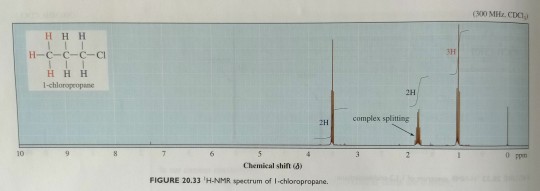
"Chemistry" 2e - Blackman, A., Bottle, S., Schmid, S., Mocerino, M., Wille, U.
#book quotes#chemistry#nonfiction#textbook#hydrogen#methyl#carbon#delta#chloropropane#nmr#nuclear magnetic resonance#spectroscopy
3 notes
·
View notes